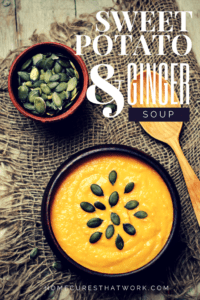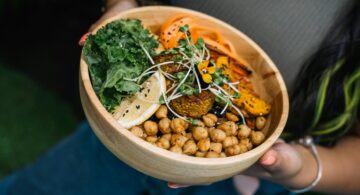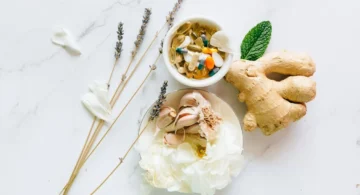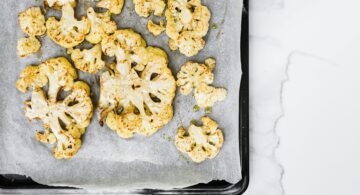Food and Migraine Connection
Separating the Good the Bad and the Ugly Migraine Trigger Foods
The light is blinding… you’re in agonizing pain…and it’s so bad, you feel sick to your stomach.
When a migraine strikes, all you can think about is making it stop… RIGHT NOW.
You might have some pretty heavy-duty painkillers ready to go for when one hits, but those quick fixes might only make you feel better briefly.
While it’s tough to think long-term when a migraine has you in its vise grip, a new study shows that reliable migraine pain relief may be just a few weeks away.
Although there is no solid end-all cure for migraines, they can be controlled and managed by the foods you eat. I’m referring to the Good, the Bad and the Ugly Foods (no relation to the movie of the same name starring the famous Clint Eastwood).
The Migraine Elimination Diet
In 1983, researchers at the Hospital for Sick Children in London reported their results for 88 children with severe, frequent migraines who began an elimination diet.[1] Of this group, 78 recovered completely, and 4 more improved greatly.
In addition, some children who also had seizures found that their seizures stopped. The researchers then reintroduced various foods and found that they sparked migraine recurrences in all but eight children.
In subsequent tests using disguised foods, the vast majority of children again became migraine symptom-free when trigger foods were avoided. Migraines returned when trigger foods were added to the diet.1
In adults, anywhere between 20 and 50 percent have a reduction or elimination of their headaches when they avoid common trigger foods.
Instead of waiting until a migraine starts and then treating it, identify common dietary triggers in order to avoid migraines altogether.
Most migraine specialists agree that the best way to avoid a migraine is to avoid the triggers. But since each person is so unique, those triggers vary widely from one person to the next. We suggest keeping a food diary to monitor what sets you off.
The foods and migraine connection will be a starting point for the Migraine Elimination Diet.
The easiest way to follow this diet is to keep meals very simple. You’ll trade a few months of dietary boredom for lots of information about your own migraine trigger foods. Two important things to note:
- Your list should include both foods to eat (the Good) and foods to avoid (the Bad and the Ugly).
- Your list is not intended as a permanent dietary change, but to help you figure out what your triggers may be. You discover your triggers by stripping down your diet first; then adding foods back in to test them.
The Good Migraine-Free Foods
The good foods are those that DO NOT cause migraine pain and have never contributed to migraines or any other pains.
The good migraine-free foods:
- Rice, such as brown rice
- Cooked vegetables, such as broccoli, spinach, Swiss chard or collards, carrots or sweet potatoes, summer squash
- Cooked or dried non-citrus fruits: cherries, cranberries, pears, prunes (but not citrus fruits, apples, bananas, peaches, or tomatoes)
- Water: tap, bottled or sparkling
The Bad Migraine Trigger Foods
The bad foods are common triggers for causing migraines in most people.
The bad migraine trigger foods:
- Dairy products, especially cheese. This includes all kinds of hard cheeses and foods prepared with cheese. The more aged the cheese, the worse the trigger. White cheeses, including cottage cheese, ricotta and cream cheese, have not been implicated, but yogurt has.
- Chocolate: Anything with cocoa. Chocolate contains phenylethylamine, which may cause blood vessels to expand and contract.
- Eggs: Eggs, especially egg whites, contain high levels of glutamic acid. Glutamic acid is a top migraine trigger. Eggs also contain exorbitant amounts of aspartic acid and phenylalanine. Aspartic acid is considered an excitotoxin that may raise inflammation in the brain—similar to MSG. Store-bought eggs and processed eggs (powdered, boxed, and egg additives) contain the highest amounts of glutamic acid, aspartic acid, phenylalanine, and inflammatory omega-6 fats.
- Deli meats and fish. If it has been aged, canned, cured, fermented, marinated, smoked or tenderized, it may trigger headaches. Preservation with nitrites or nitrates is a no-no. Avoid beef livers and chicken livers, as well.
- Freshly baked breads raised with yeast. Especially problematic is sourdough. Also look out for bagels, doughnuts, pizza dough and soft pretzels less than 24 hours out of the oven.
- Nuts: From almonds to pistachios, they can all be culprits, as can nut butters.
- Red wine: Too much red wine or any dark alcohol can stack the decks against you. Of all drinking alcohols, vodka is tolerated best. Also avoid vinegar; balsamic is the most problematic, but white should be OK.
- Caffeinated drinks: Found in coffee, tea, colas and certain other sodas. Going off caffeine suddenly can also trigger migraines.
- MSG (monosodium glutamine): Notoriously found in Chinese food, but also in seasoned salt, salty snacks, prepared soups, many low-fat and low-cal foods, and even veggie burgers. Steer clear of hydrolyzed vegetable, soy or plant proteins, which can contain similar compounds.
- Aspartame. Found in many diet soft drinks and artificial sweeteners, aspartame contains excitotoxins known to affect nerve cells.
- Certain fruits and vegetables.
- Among the problematic fruits: citrus fruits and fruit juices, bananas, raisins and other dried fruits preserved with sulfites, raspberries, red plums, papayas, passion fruit, figs, dates, and avocados.
- Vegetable culprits include sauerkraut, pea pods and beans (from fava to navy to lentils).
- The worst vegetable offender may be onions, though baby onions are OK.
The major culprits reported as headache triggers are alcoholic drinks, chocolate and cheese. But how many of you reading this article are fed up with being told to avoid these foods, or have already eliminated them from your diet with absolutely no effect on the frequency or severity of your attacks?
In general, avoid cold or frozen foods, foods that are high in tyramine (aged cheeses and cultured dairy products), preservatives or processed foods and anything that contains caffeine.
The Ugly Migraine Foods
The ugly foods are those that specifically cause you migraine pain. You will need to personally identify these during a trial-and-error Migraine Elimination Diet. This trial-and-error diet will help you weed out the specific “ugly” trigger foods that precipitate migraines and determine the safe foods to include in your daily diet.
The Elimination Diet: Finding Your Migraine Triggers
The Migraine Elimination Diet is designed to separate the Good from the Bad and the Ugly. Start off the diet by getting a notebook to keep track of your migraine trigger foods and your safe foods; then plan your menu around the Good foods only. This will mean completely avoiding the Bad foods during this trial-and-error time frame. If you are a coffee or tea drinker, you will need to wean yourself off slowly before you begin. See Recipe Ideas below for some helpful starting points.
CHART EVERYTHING. Note all the conditions leading up to the headache—including weather patterns, menstrual cycle, and stress load—and see what patterns emerge.
- Once your migraine symptoms have diminished, usually within a week or two, start introducing one food at a time to your daily menu, but make sure to take a day off in between introducing each new food item.
- Also, eat a generous amount of the specific food item so you can see whether it causes any pain or migraine symptoms.
- If the trigger food releases the onset of a migraine, make note of it in your notebook.
- If the food causes no adverse migraine pain it is now considered a Good food item and you can include it in your diet.
- It is important to stay away from adding the bad foods to your menu until the end of the trial-and-error Migraine Elimination Diet.
- After a few more weeks, you should have a good idea which are your trigger foods and hopefully a nice long list of Good foods you can safely choose from.
Migraine Friendly Recipes
Breakfast: Migraine-Free Oatmeal
Ingredients:
- 3/4 cup whole grain old-fashioned oats or steel-cut oatmeal
- 1 tsp cinnamon
- Add a dash of vanilla or maple syrup (optional)
Directions:
- Follow the instructions for cooking oatmeal.
- Add the cinnamon and vanilla or maple syrup to the oatmeal.
- Stir and eat.
Lunch: Simple Sweet Potato Ginger Soup
Ingredients:
- 1 Tbsp olive oil
- 2 medium yellow onions, chopped
- 3 large sweet potatoes (pink, orange, or yellow variety), peeled and chopped
- 1 inch piece fresh ginger, peeled and finely chopped
- 6 cups low-sodium vegetable broth
- Salt and pepper, to taste
Directions:
- Heat oil in a medium saucepan over medium heat. Add onions and sauté until golden.
- Pour in the broth and bring to boil over medium-high heat. Add sweet potatoes and ginger and reduce heat to medium-low. Simmer until sweet potatoes are easily pierced with a fork (about 20 to 25 minutes).
- Working in batches, purée soup in a blender or use an immersible hand blender to blend soup until smooth. Season with salt and pepper to taste. Serve hot.[2]
Dinner: Garlic Shrimp and Broccoli Pasta (Migraine-Free, Gluten-free)
Ingredients:
- 1 pound raw shrimp, peeled & de-veined
- 1/2 package of gluten-free spaghetti
- 1 large crown of broccoli
- 3 garlic cloves, minced
- 4 Tbsp butter
- 1 Tbsp finely chopped fresh parsley
- 1/2 tsp red pepper flakes
- 1/2 tsp dried basil and/or oregano
- Salt
- Pepper
Directions:
- Start a pot of water to boil for pasta
- While the water is starting to heat up, peel and de-vein shrimp, then salt and pepper to taste
- Cut broccoli into small, bite-sized florets and steam for 3-4 minutes
- Melt 2 Tbsp of butter in a large saucepan
- Add chopped garlic, red pepper flakes, and oregano/basil to butter and simmer
- Cook butter mixture for about 2 minutes
- Add shrimp to butter mixture
- Cook for 2-3 minutes until both sides are pink
- Add 2 more Tbsp of butter to shrimp pan, then mix in cooked pasta and steamed broccoli
- Sprinkle freshly chopped parsley on top just before serving.
Got a headache? Try these beverages that keep your body balanced but also provide effective relief. A magnesium deficiency can also contribute to migraines; try these migraine fighting foods high with magnesium. If you’ve been wanting to try float therapy to float away stress, after your first soak your migraine just might disappear.

























